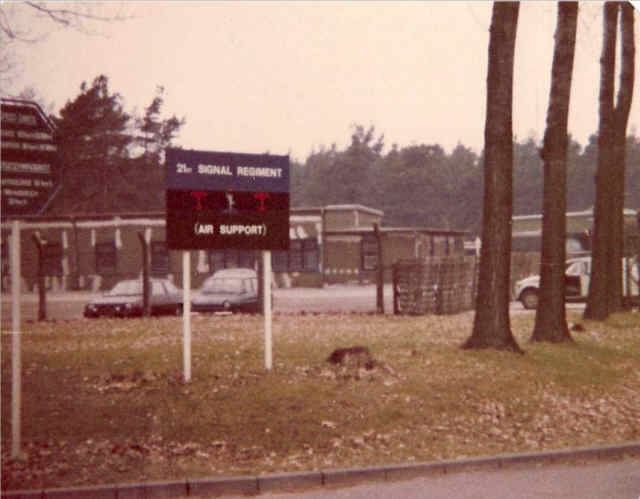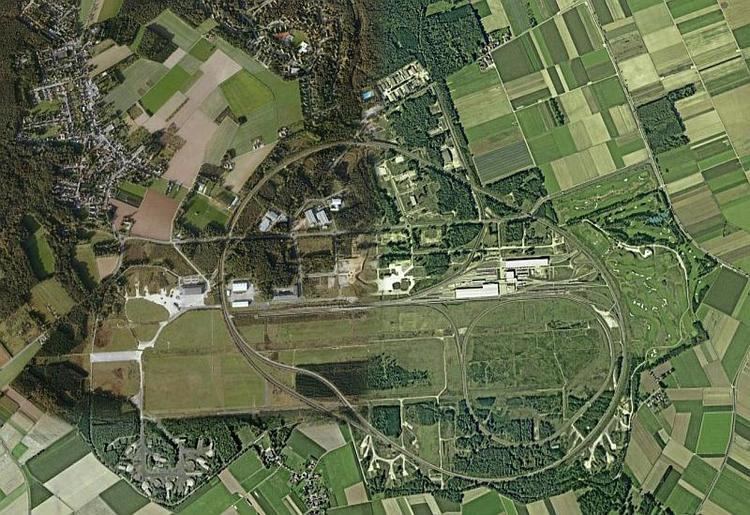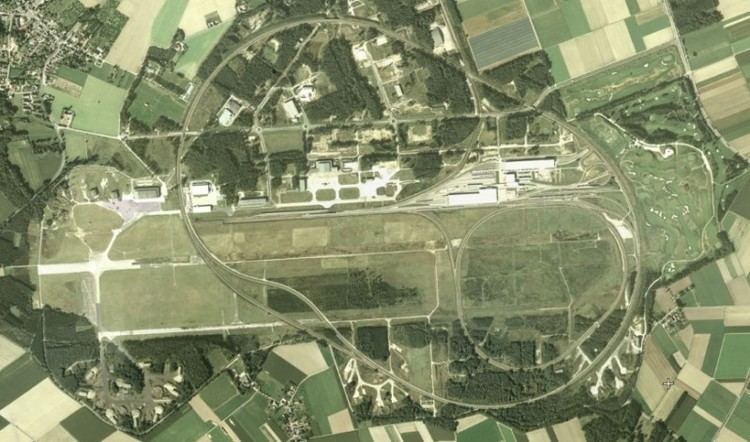Type Flying station | ||
 | ||
Active 15 January 1952 – 1 April 1992 Allegiance UK: British Armed Forces Role Fighter attack and air defence March Royal Air Force March Past Owner Ministry of Defence (formerly) | ||
Raf wildenrath amqs
Royal Air Force Wildenrath, commonly known as RAF Wildenrath, was a Royal Air Force military airbase near Wildenrath in North Rhine-Westphalia, Germany that operated from 1952 to 1992. Wildenrath was the first of four 'Clutch' stations built for the RAF in Germany during the early 1950s. It opened on 15 January 1952, and was followed by RAF Geilenkirchen on 24 May 1953, RAF Brüggen in July 1953 and RAF Laarbruch that opened on 15 October 1954. RAF Wildenrath, RAF Brüggen and RAF Laarbruch were close to each other and came under the auspices of NATO's Second Allied Tactical Air Force (2ATAF).
Contents

Raf wildenrath on air
RAF service

In 1953, the station Commanding Officer was Group Captain JE "Johnnie" Johnson - a top-scoring British "Ace" fighter pilot of the Second World War. There were two Canadair Sabre F.4 squadrons (Nos 67 and 71 Squadrons RAF), and a Sabre conversion flight. Also on site were 724 Signals Unit (Fighter control radar) 402 Air Stores Park, a unit of the RAF Regiment and an Army detachment that maintained land lines (AFS).

In the late 1950s to 1970, Wildenrath was home to Nos. 14 and 17 Squadrons; the former flew B(I).8 Canberras, and was part of the 2nd ATAF tactical nuclear strike force. The locations of their quick-readiness dispersals can still be seen to the south of the former main gate. No. 17 Squadron flew the PR.7 Canberra, and the two squadrons' "in house" T.4 training aircraft were combined into the so-called "T4 Flight" as a separate sub-unit, forming a useful additional resource for 2ATAF senior officers to use to maintain their flying hours. In the early 1960s, 88 Squadron Canberras were also based at Wildenrath. The base was also used for 'CasEvac' (emergency casualty evacuations) usually to the UK.

In 1960, the Station Commander was Group Captain "Bats" Barthold and 17 Squadron was commanded by Wing Commander Dugald "Buster" Lumsden, who accepted the squadron's colours presented by Marshal of the Royal Air Force Sir Dermot Boyle. At this time, the commanding officer of 2ATAF (former Battle of Britain fighter pilot, Sir Christopher Foxley-Norris) had a Vickers Valetta aircraft as his personal transport, its lower fuselage and wings kept highly polished by the ground-crew of the RAF Germany Communication Flight (who later took the colour of ex-Singapore Gloster Javelin No. 60 Squadron RAF). The aircraft was eventually declared un-airworthy due to many of its rivet-heads having been polished off. It can be seen today in the RAF Museum at Hendon, London.
In the 1970s, Wildenrath became the home to the RAF "Harrier Force" which included Numbers 3, 4 and 20 Squadrons as well as 21(AS) Signal Regiment. In 1974-5 the Wildenrath station commander was Group Captain Patrick "Paddy" Hine, who later rose to Air Chief Marshal and Joint Commander of all British forces during the Gulf War. The Harrier squadrons moved on to RAF Gütersloh in 1977.
RAF Wildenrath housed numbers 19 Sqn, which re-formed at Wildenrath in October 1976, and 92 Sqn which formed there in April 1977. Both units flew F-4 Phantoms, providing air defence for RAF Germany (RAFG) and its allies until 1991.
A communications flight was provided by 60 Sqn, initially with Hunting Percival Pembrokes which were replaced by Hawker Siddeley Andovers in the mid-to-late 1980s. The Pembrokes had a second, more covert, role of taking photographs of Soviet and East German armed forces while flying along the Berlin air corridors. RAF Germany Communications Squadron also operated dH Devon and dH Heron aircraft. In addition to its other overt and covert functions, 60 Squadron also acted as visiting aircraft flight for Wildenrath, hosting almost every type of RAF and NATO aircraft and civilian "trooper" BAC-111s and Boeing 737s.
Wildenrath was also home to an Army Air Corps flight operating light helicopters and fixed wing aircraft such as the Westland Scout and De Havilland Beaver. The flight had its own hangar facilities on the base and various flight designations throughout its tenancy. Known initially as 12 Independent Liaison Flight it then was renamed to 31 flight, then 131 Flight Royal Corps of Transport (ex RASC), No. 669 Squadron AAC, and then in its last colours with a return to the 12 Flight title. The flight was manned by members of the corps under which the flight was named with the REME providing the technical servicing and maintenance of the aircraft.
Wildenrath had five dispersals around the single runway. Alpha and Echo were not used in the normal flying operations of the station. No 19 Squadron operated from one of the 3 dispersals on the far side of the airfield designated 'Bravo Dispersal'. It also housed the two operational 'Battle Flights' for both fighter squadrons. No 92 Squadron flew from 'Delta Dispersal' with both squadrons using the hardened shelters in 'Charlie Dispersal' for spare space to house Phantoms when necessary. Charlie Dispersal was also used by cross trained 60 Squadron ground crew to turn around visiting aircraft during station exercises. The taxiway that ran parallel to the main runway and linked the three dispersals was used as the alternate runway for emergencies if the main runway was compromised. Alpha Dispersal was the site used for the Bloodhounds launchers and Echo Dispersal housed the POL storage section. 60 Sqn operated from the hangar close to the main Squadron Servicing hangar on the 'Soft Side' of the airbase.
Wildenrath closed as a flying base on 1 April 1992. The last flying squadron still present at that time, No 60 Squadron, moved to the nearby RAF Brüggen.
Wildenrath squadrons
Wildenrath today
The housing areas of the former RAF Wildenrath were used to accommodate military personnel until the end of September 2012, when the land was formally handed back to German local authorities. Few of the larger buildings remain.
The original airfield site and immediate environs are now used by Siemens AG under their transportation and automotive business arm (Siemens Mobility), as their railway testing centre; known as the Test and validation centre, Wegberg-Wildenrath. By 2007, the railway test tracks had taken over considerable areas of the airfield. All but the western threshold and overrun of the runway has been obliterated, and the eastern runway threshold is now a golf course, rather than the site of Bloodhound surface to air missiles. The north-east dispersal is completely taken over by sidings, workshops and shunting loops. Of the southern dispersals, the central and eastern are bisected by the main railway oval test track. The south western dispersal and Hardened Aircraft Shelters have been removed, with the surviving taxiways being used for recreational purposes by local residents.
